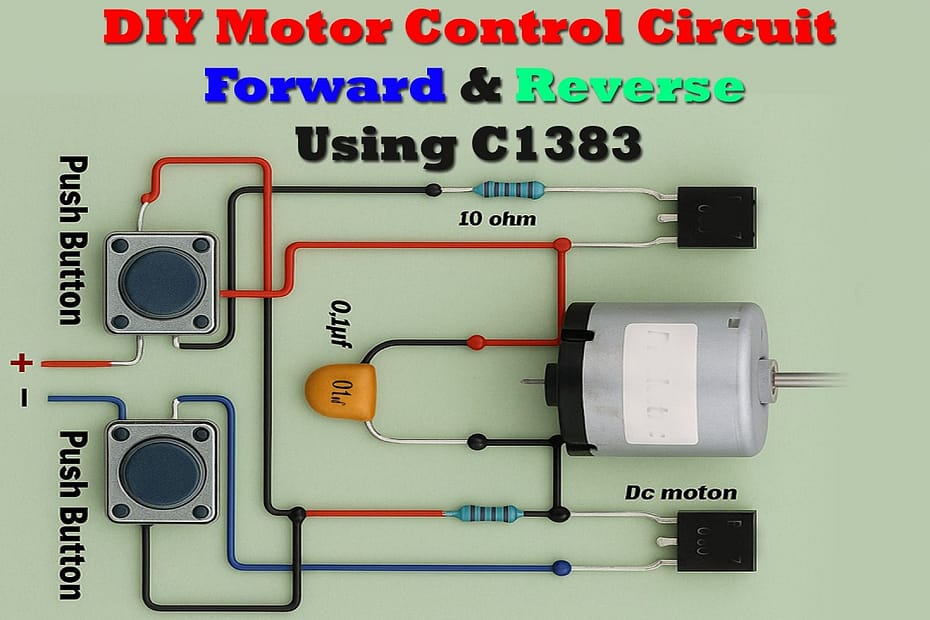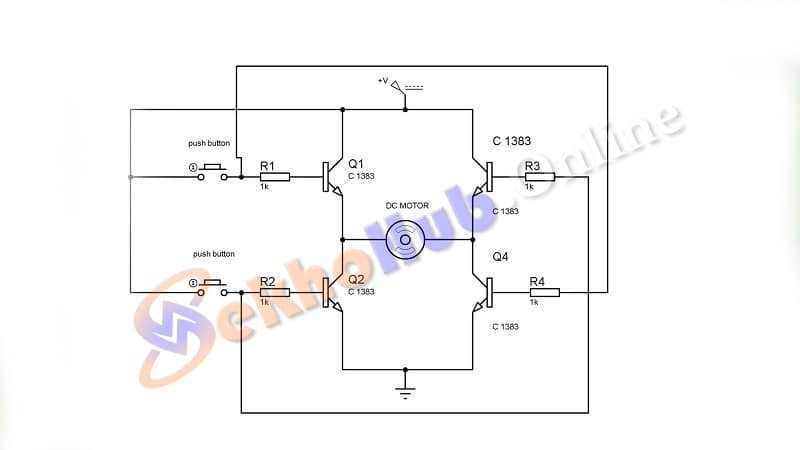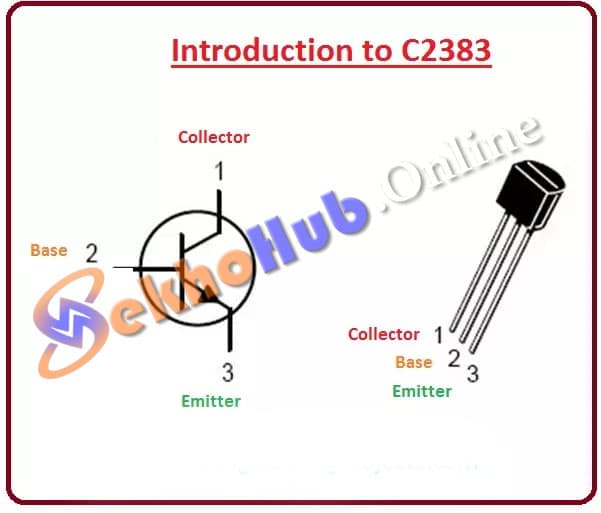DIY Motor Control Circuit Forward & Reverse Using C1383
[Sekhohub.online]
Introduction
Controlling the direction of a DC motor is a fundamental task in many electronics, robotics, and automation projects. Whether you’re building a line-following robot, a smart car, or a simple mechanical system, the ability to make a motor move both forward and in reverse is essential.
In this tutorial, we will show you how to create a motor reverse-forward control circuit using the C1383 transistor, a reliable NPN power transistor. This project is perfect for beginners, DIY electronics enthusiasts, and students who want to understand basic motor control using transistors instead of complex motor driver ICs.
Using just a few components—including two C1383 transistors, a DC motor, and some switches—you’ll learn how to safely and effectively control motor direction in both clockwise and counterclockwise rotation. Let’s dive in and build this simple yet powerful circuit!
Materials for the Project
1- 4X 1383 TRANSISTOR
2- 4X 1 K RESISTOR
3- 2X MICRO PUSH BUTTON
4- 1X DC MOTOR
5- 1X VERO BOARD
6- 1X JUMPER WIRE
Download Circuit Diagram
Circuit Diagram
C1383 Transistor Pin Configuration (TO-220 Package)
The C1383 (or 2SC1383) is an NPN transistor commonly used in power switching and amplification circuits.
| Pin No | Name | Description |
|---|---|---|
| 1 | Base (B) | Input control pin for switching |
| 2 | Collector (C) | Connected to load (e.g., motor coil) |
| 3 | Emitter (E) | Connected to ground or negative rail |
⚙️ Applications
The motor reverse-forward control circuit using C1383 transistors is simple, affordable, and ideal for a wide range of practical projects. Below are some of the most common applications:
Electronics and Robotics:
Miniature robot car direction control
Line-following and maze-solving robots
Conveyor belt direction reversal in prototypes
Robotic arm movement (bidirectional control)
⚙️ Working Explanation
The motor reverse-forward control circuit works by reversing the polarity of the voltage applied to the motor using two C1383 NPN transistors. Each transistor controls one direction of current flow, allowing the motor to spin in either direction.




